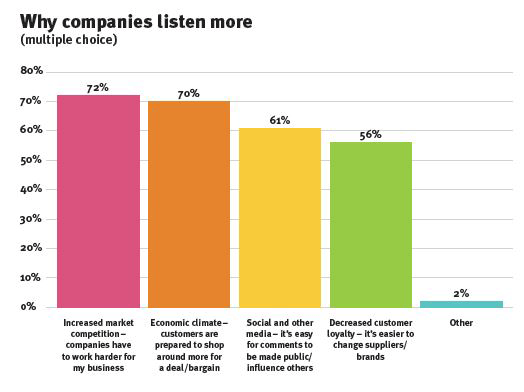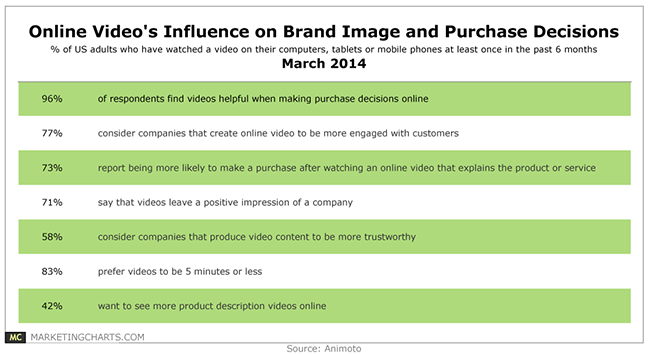A video promoting your SaaS* products gives incredible value to your audience and excellent results for the brand. Videos are easy to understand, effective, and can drive sales in a significant way. But it can’t just be any video, it needs to be created in a way that achieves your goals and makes sales. According to Ascend2, in a recent survey of over 280 companies, 85% of companies that found value in use video marketing as a strategy. The remaining 15% are struggling to achieve success with video.
About half of the marketers surveyed consider customer testimonials, “explainer” or tutorial videos, and demonstration videos the most effective types of video content used. However, they were also asked, “What are the most difficult types of video content to create?” Customer testimonials and project reviews/case studies topped that chart.
The research compared the most effective types of video content with the most difficult to create. It found that explainer or tutorial videos, and demonstration videos are nearly twice as effective as they are difficult to create.**
In other words, when you want your software to sell, it isn’t that hard to create an explainer video that does exactly that, and provides enormous ROI on the investment.
Simplifilm was co-founded in 2011 by Chris Johnson, and specializes in creating videos that make the complex simple. This is our blog. We’ve been at this 5 years. We take on the hard stuff and make it so people can understand why, using metaphor and sophisticated image. Our company began with a product demo video made for Headway Themes, and since then we’ve worked with a variety of software clients from Salesforce and Symphony, to Wordstream, Health Market Science, and Scirra.
From DSI Global who reported a record number of requests for demos after going live with their video, to Health Market Science who increased engagement exponentially, we have a proven track record of making videos that sell.
Our product video helped us articulate use cases a lot more effectively than any brochure could. It was an excellent and high-utility marketing asset we used across channels that measurably increased engagement.”
-Stacey Levas, former VP, Marketing, Health Market Science, a LexisNexis Company
After 5 years in the industry, we’ve found that there are 5 key ingredients to a video that drives enterprise software sales. These are often overlooked by companies creating their own video – and even sometimes by “professional” video companies. A video is in fact worthless if it doesn’t achieve your goals. And usually, the goal is a product purchase made by a customer who’s watched your video.
These 5 elements are essential in creating a stellar video that drives your customers to buy:
Define Your Niche with Specificity
Many companies can go too broad with their approach, such as saying their product is a WordPress plugin. Get down to the details when defining your product: a WordPress plugin that does WHAT? Which industry does it target (besides just WordPress users)? Define the niche in the video so people will know what specifically this product is about. Don’t leave them clueless or rely on an aura of mystery – that can lead to people feeling psychologically gypped by the results. Ramit Sethi often cites these small psychological triggers that can make or break a purchase decision – and being upfront and specific about exactly where your product lies in the market is key to gaining a foothold.
Create Relatability to Your Product
Why should people care? What is important about your product? What problems does it solve? (Hint: this may not actually be the problems you think it does.) The answers to these questions lie in asking your customers. Yes, ask them! Find out what they love about your product. The answers may surprise you but it’s necessary to keep an open mind. You may discover a key angle you were not aware of – or a market you can speak to in your video.

Graph: Snap Surveys Consumer Panel Research Survey
Listening to your customers is critical in today’s crowded market. Usabilla and User Voice both can collect user feedback in an easy-to-use way. Once you have the feedback, echo these sentiments in your video. Pay attention to words and phrases, and include them. If customers call your product “fun” and “innovative” these are the words you want to include in your script. A truncated testimonial snippet, if you will.
Position Your Product as THE (BLANK)
Is your product the SOLUTION? The WAY to achieve what your customers want? The PATH to greatness? So position it in your story as this. It solves the problem. It speeds up communication. It reduces excess. It does exactly what your customers need. But only your product can do it. You are leading your customers by the hand to see your product floating before them in this sea of mediocrity, the lone oasis filled with delight. Your product is the SHIZZLE. And the viewers of the video have to see it like this.
Create a Sense of Urgency
So many videos fall flat because there isn’t a big enough setup and the PROBLEM isn’t critical. Your product needs to solve an important problem for your audience, and it needs to solve it NOW. No big barriers to entry. No other excuses. This is a high-stakes proposition.

Online Video’s Influence on Purchase Decisions Chart
Include a Strong Call to Action
Your video will just end up being a nice, short narrative…fun to look at, but completely ineffectual without a Call to Action. And a strong one to get people to take an action, not passively stay in information consumption mode. Yes, a button to click, an email newsletter signup, an ask to visit the website. But not just “Visit Our Website here”…you want to reiterate the benefit to the customer in your call to action. So they know exactly WHY they need to click or subscribe. What do they get again? Reiterate.
Bland and ineffective: Visit Our Website
Better: Get Started Here, Subscribe Now
Great: Get Started on Your Company Organization Here, Sign Up for the Road to Wellness Now
What Not to Do if You Want Your Video to Drive Sales
There is a common trap that many companies fall into when it comes to creating a software sales video. Here are the most common mistakes we see:
Mistake 1: The Feature Dump
Your software is amazing. It can organize users, create data libraries, connect people, and even slice bread. But we’ve found by far the most effective in driving sales is focusing on a core feature: something your product does better than anyone else out there. And maybe 1 or 2 secondary features. But no more. We don’t need to know that you can change your user’s icon or that it can work on iPhone 4. Focus on the main benefit for your customers and the video message will be clear.
Mistake 2: Not staying true to brand style
Websites are relaunched, brand logos are redesigned, and companies reinvent themselves all the time. And that’s wonderful. Just make sure your video reflects this. Sometimes companies want to try a different style or look in the video because they think it might be funny or they like that particular style. In this case, they may need to re-evaluate to make sure the look and feel of the video, or the Video Treatment jives with their current branding and style. If not, it will be jarring for the users. And just because it’s funny or cute or trendy (read:whiteboard animation explainer videos) doesn’t mean it’s right for your company.
Mistake 3: Not editing ruthlessly to make copy shorter
You have only 8.25 seconds to grab your viewer’s attention. Nearly ⅕ of viewers click away from a video in the first 10 seconds. Every second your narrator is reading the script is a second that can be used to get attention and convey your message. Is your script punchy enough? Does it drive the story forward? Or does it drone? Ruthlessly cut the words in your script down to be precise, impactful, and brief. Remove adverbs and modifiers because mostly, they are useless. (Note what we did there.) Don’t use passive voice. The Hemingway App and Readability Test Tool are good for this when it comes to writing. Then, once you think the script is good, read it out loud to yourself. Read it out loud in front of others. Clunky phrases and clumsy wording will stand out immediately. And other opportunities to cut back and rephrase will present themselves.
Mistake 4: Wanting a video that is a clone of what a competitor did
You see a video that’s done well for your competitor, and you want one just like it. Their success, you figure, is replicatable, as long as you have the same video. Don’t fall into this trap. Here the classic advice is best: “Be Yourself.” You must differentiate to get results, you must “zig where others zag.” (Credit to Derek Halpern for the phrase.) Build off what they’ve done, piggyback if you must, but ultimately be different because you will get caught and it won’t be pretty. Copycatting is the ultimate sales killer.
Mistake 5: The “This is Bill” trope
A.K.A. “The 2010,” this video script follows a familiar story:
“Meet Bill.
Bill has a problem.
Now there’s [Product].
[Product] solves Bill’s problem.”
Cue curtains.
This is a very standard, overused style, common in motion graphics and animated explainer videos. Sure, it can work under the right circumstances. But it’s particularly trite, and collectively we’ve moved beyond that in storytelling.
Conclusion
It can be hard to just read a list like this, so we’ve created this useful infographic to illustrate the above points:


Need a little more help?
We offer a video script-writing service that allows us (an unbiased third party with 5 years’ experience writing software videos that sell) to create your video script for you. We only have a few slots left for 2015 and we’d love to help you out. Tell us what you need so we can get started.
